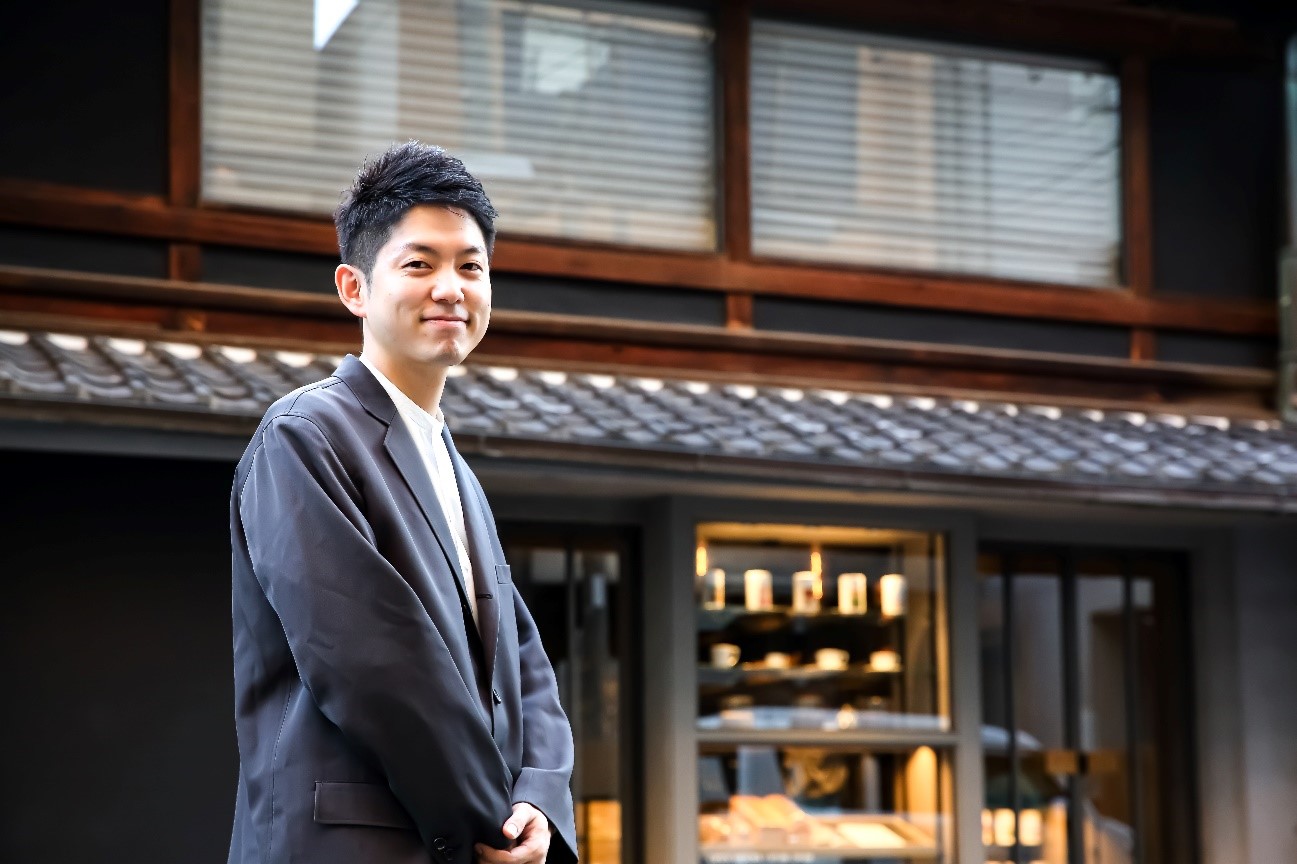
Ogawa Coffee Sakaimachi Nishiki Shop newly opened in February 2022. It serves excellent coffee and food from early in the morning in a renovated Kyo-machiya townhouse with a modern atmosphere, and gains a good reputation. Why did Ogawa Coffee, which had been loved by the locals in Kyoto, choose a Kyo-machiya for its new shop? Mr. Katsuto Ichimura, a shop manager, explained us the reasons.
Profile
Ogawa Coffee Sakai Nishiki Shop
Opened in February 2022. Based on a concept of making a new shop that would last for another hundred years, Ogawa Coffee, the long-established coffee roastery, revitalized a Kyo-machiya townhouse which was located close to the place where the roastery originally started its business. In the historic atmosphere, flannel drip coffee and special food made with Kyoto local ingredients are served.
Encounter with an over a hundred years old Kyo-machiya townhouse close to the Roastery’s place of the origin
Founded in Kyoto, Ogawa Coffee has a history of 70 years. The roastery is very popular, having its shops in Kyoto, Tokyo, and Boston. Among them, Sakaimachi Nishiki Shop is the most special one due to its shop concept that aims to connect to the future after a hundred years.
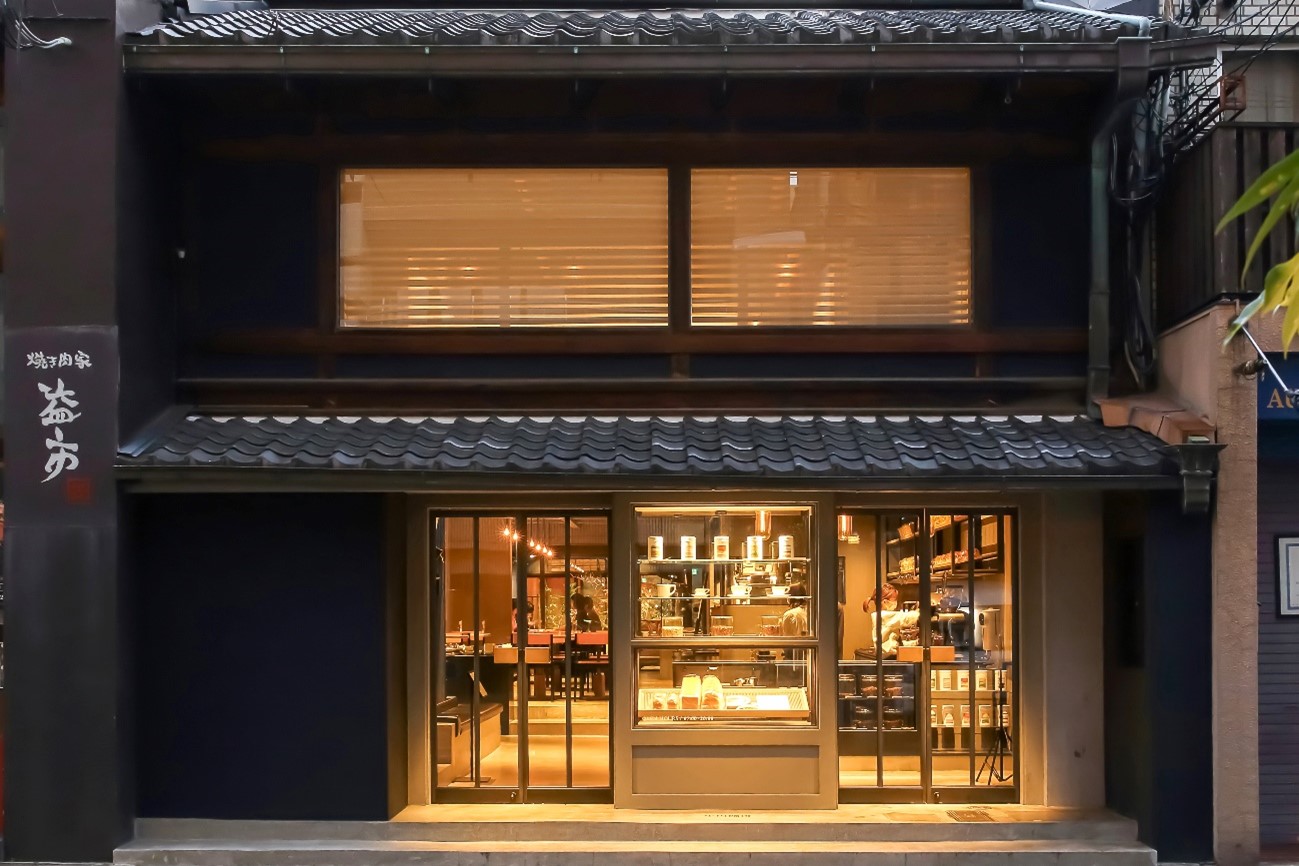
|
| The Kyo-machiya stands stately, but its glass doors create a warm atmosphere. |
Ogawa Coffee aimed to open a new shop for its 70th anniversary and looked for a place close to the place where the roastery was founded. They came across a Kyo-machiya townhouse, which would later become the Sakai Nishiki Shop. The story of the townhouse with over a hundred years’ history perfectly matched the roastery’s concept of “making a shop that would last for another a hundred years.” Moreover, its location made the roastery choose the townhouse for their new shop; for it was close to the Nishiki Market so called “Kyoto’s kitchen” where the locals gathered and the connections to the locals would be maintained. About two years later in February 2022, Ogawa Coffee Sakaimachi Nishiki Shop was opened.
Making the most of a Kyo-machiya townhouse to create a cozy atmosphere
Once you step inside, the warmth of the old townhouse and a modern atmosphere of the space welcome you. The interior of the shop is impressively open and spacious, taking advantage of a Kyo-machiya’s uniqueness such as a narrow at the entrance but long in depth.
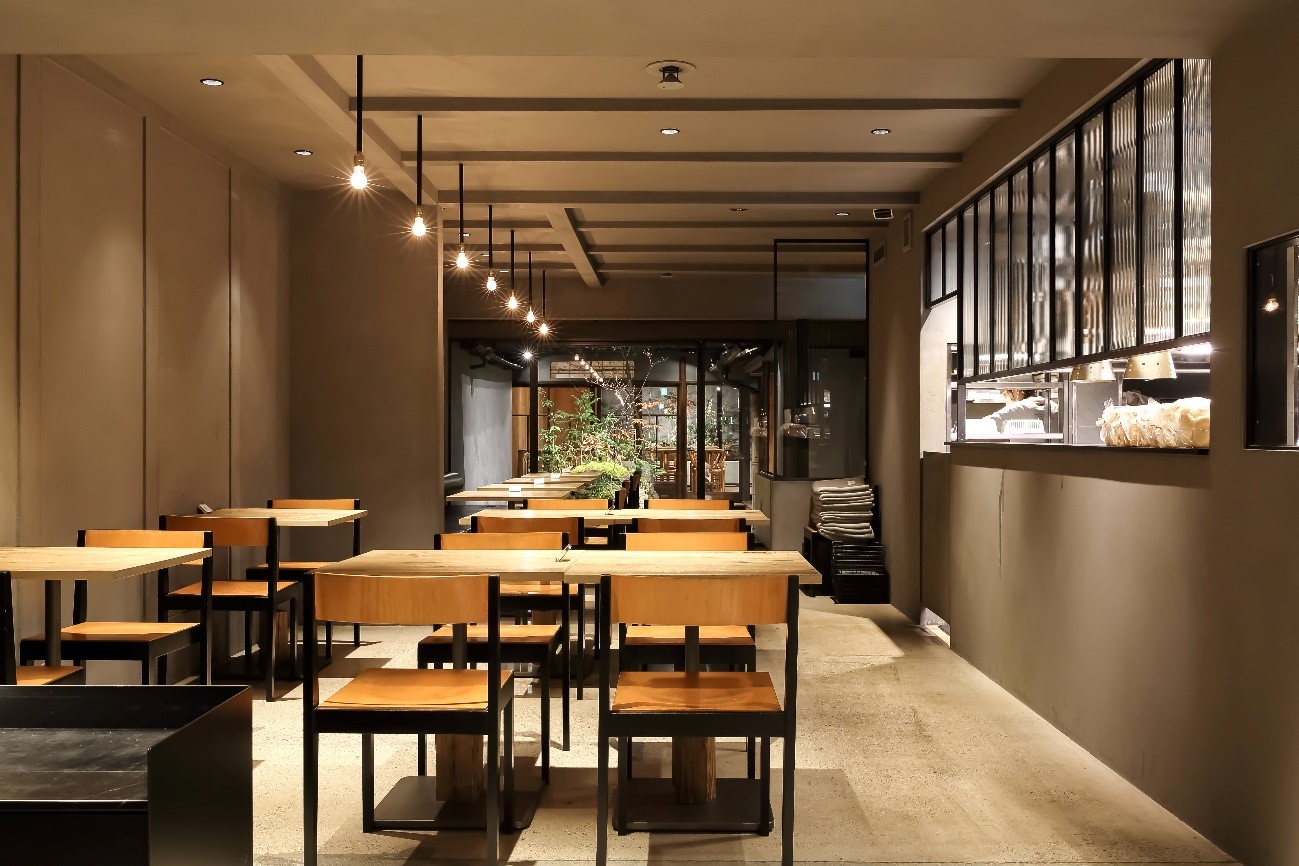
|
| Kyo-machiya is sometimes described as “Unagi-no-nedoko,” a bed for an eel, because of its unique features being built long and deep with a narrow frontage. The interior of the shop is designed, making the most of the features. |
The openness is given to the space thanks to the entrance atrium and large windows with a view of a tsubo-niwa garden. It was difficult to create an atrium in the townhouse in terms of earthquake resistance, but Ogawa Cofee made several adjustments in the hope to create a comfortable space for their customers to get relaxed in their new shop. Finally, the ideal entrance was completed. The combination of the open atrium and the soft sunlight coming in through the large windows makes the space indescribably cozy.
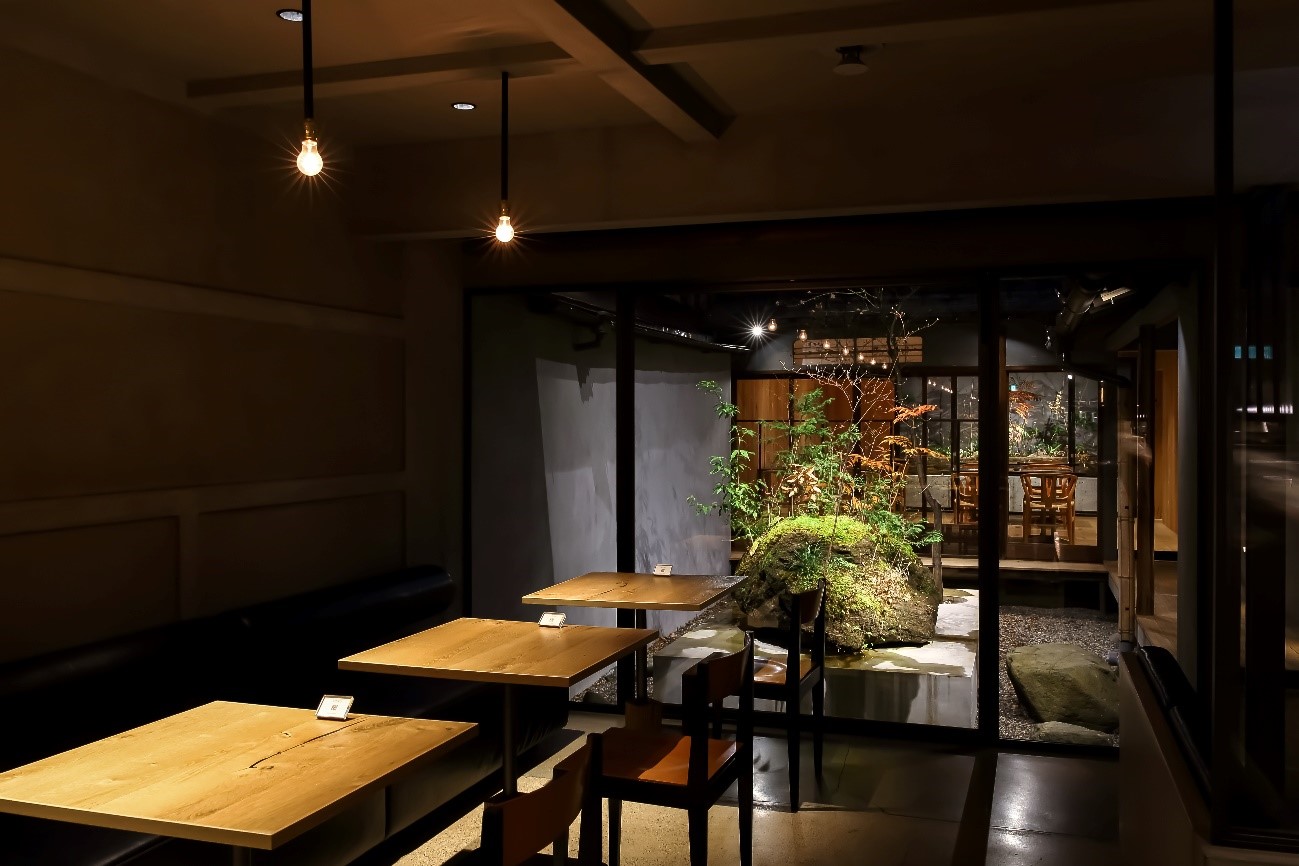
|
| A tsubo-niwa garden can be seen from the large windows. Sometimes little birds come and play in the garden. |
Incidentally, the large stones laid in the tsubo-niwa garden are pumice stone and more than 30 kinds of plants native to Japan are planted. These plants that can grow naturally without any special care match the shop’s concept of looking a hundred years ahead.
From the interior to the menu: challenges looking ahead to another hundred years
The Sakaimachi Nishiki shop’s mission is to disseminate the Japanese unique culture and the coffee culture. Behind the mission, there exists the Ogawa Coffee’s strong desire to contribute to creating a sustainable society through coffee. The roastery has demonstrated it for over the years so that it is also fully reflected in the interior of the shop. For example, scrap timber is turned into a table leg and the original beams are bleached and reused to fit in a modern Japanese space.
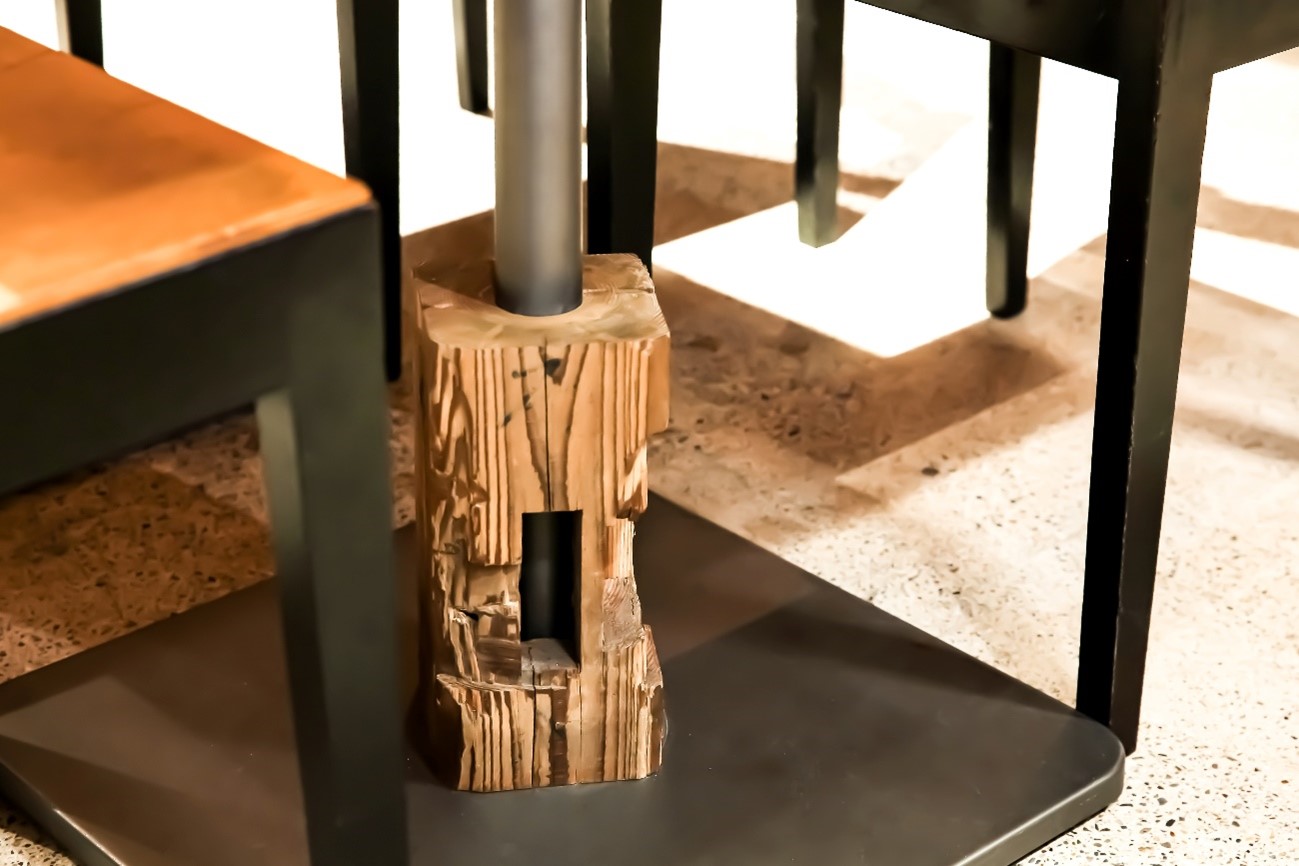
|
| Scrap timber is used for a table leg. Subtle reuse of timber from the former Kyo-machiya gives a sense of unity to the space. |
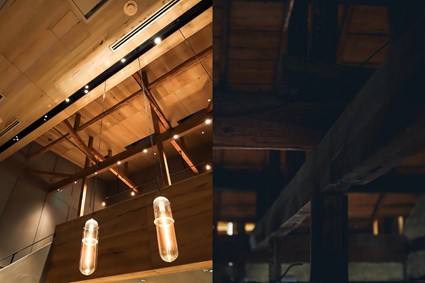
|
| (Left) In the entrance atrium, bleached beams are reused. (Right) The beams before renovation were very deep in color. |
Ogawa Coffee’s desire for sustainable activities seems to link to the mindful lifestyle that has been fostered in Kyo-machiya townhouses and passed down to the people of Kyoto. On the second floor, there is an event space, which is sometimes used for the first events in Kyoto and functions as a base to disseminate Kyoto culture and various cultures.
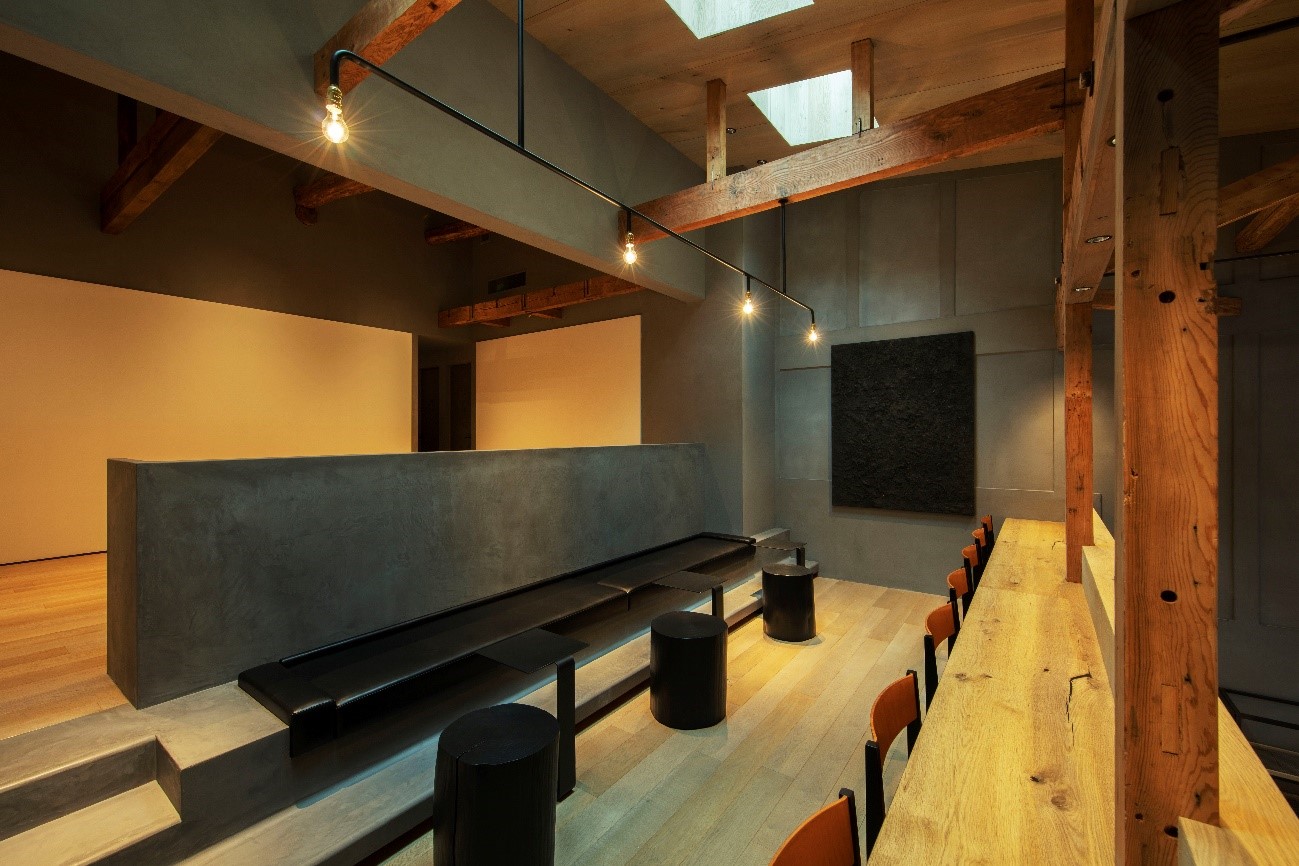
|
| On the second floor, there are a free space for “To Go” customers and an event space. A customer can enjoy an event after having a cup of coffee at his/her favorite seat. |
The shop’s challenges are also represented in its menu; for example, they serve flannel drip coffee using only ethically sourced coffee. Serving flannel drip coffee is the first trial in the long history of the roastery. The service is eco-friendly, for flannel coffee filters can be used repeatedly; moreover, it contributes to promoting traditional coffee culture.
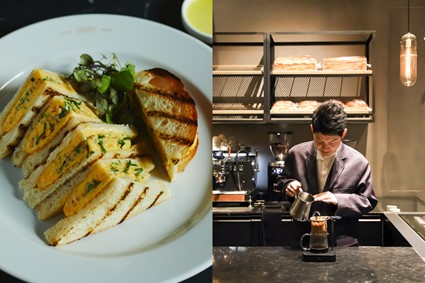
|
| (Left) Popular breakfast special (Right) Each cup is carefully brewed with a flannel filter. |
Furthermore, the shop pursues “local production for local consumption.” They developed an original menu using ingredients unique to Kyoto, such as bread made from wheat produced in Kyoto and the cultured koji butter using rice malt from the Sasaki Sake Brewery, so that the special food menu is served in the shop.
Disseminate the coffee culture from the historical Kyo-machiya townhouse
The Sakaimachi Nishiki shop attracts people of all ages and genders from early in the morning. The clientele ranges from the locals, tourists to visitors from abroad, but they all enjoy their time in the shop over a cup of coffee. The shop also attracts attention from people engaged in the field of architecture, and some media have already featured the shop. Many people with an interest in architecture visit the place. Mr. Ichimura told us that some architecture students had asked him if they could work in the shop.
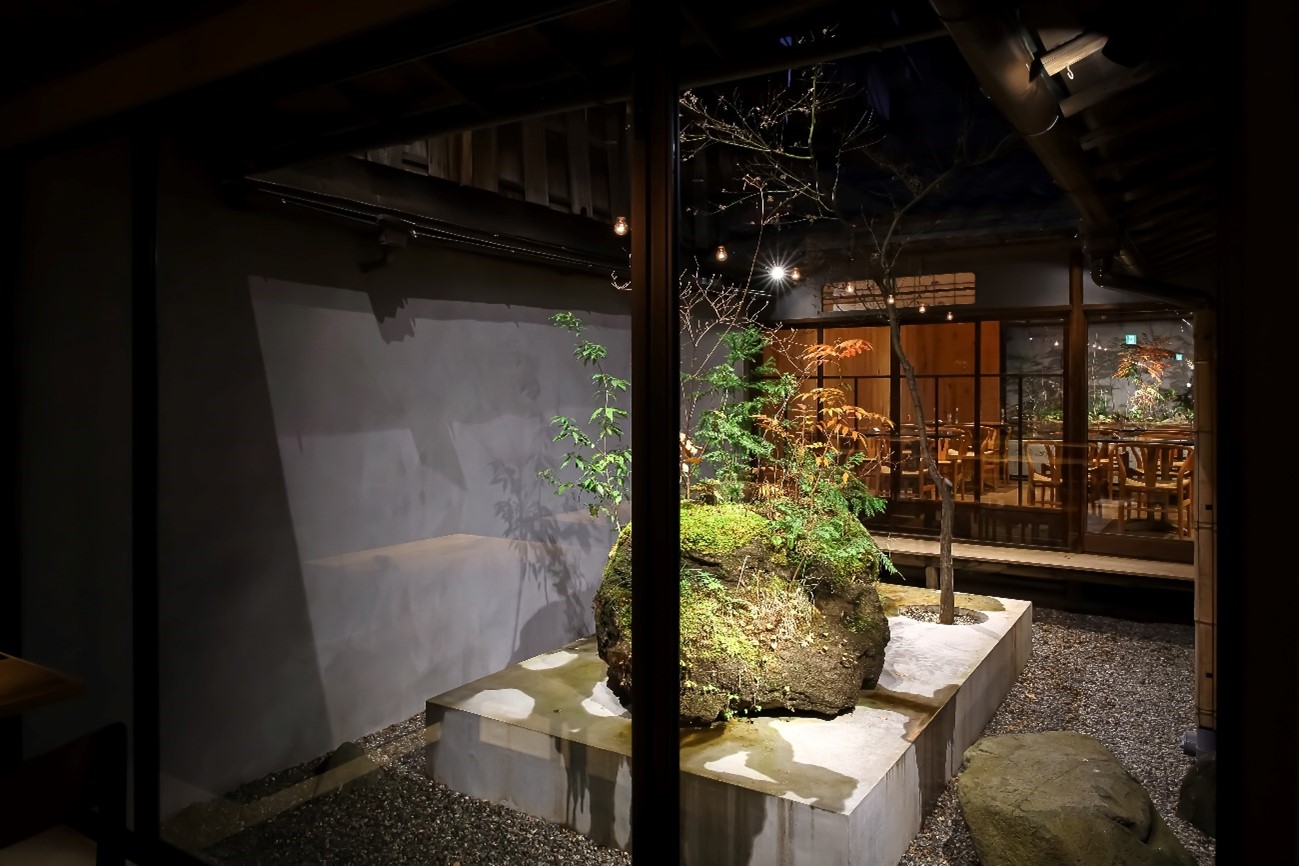
|
| At the back of the tsubo-niwa garden, a detached house lies. It has a different atmosphere from the one in the main house. |
Sometimes Ogawa Coffee employees use the place for business meetings. Because the shop is filled with thoughts and ideas of the roastery, the space itself naturally encourages conversation and helps the business partners understand the company and its products much deeper. Such synergy comes out thanks to the perfect fusion of Ogawa Coffee’s thoughts and the story of the townhouse with over a hundred-years history. “We would like to continue to disseminate culture and the attractiveness of coffee from this historic Kyo-machiya townhouse,” says Mr. Ichimura. His words somehow urge me to take a look into the future after another hundred years.

